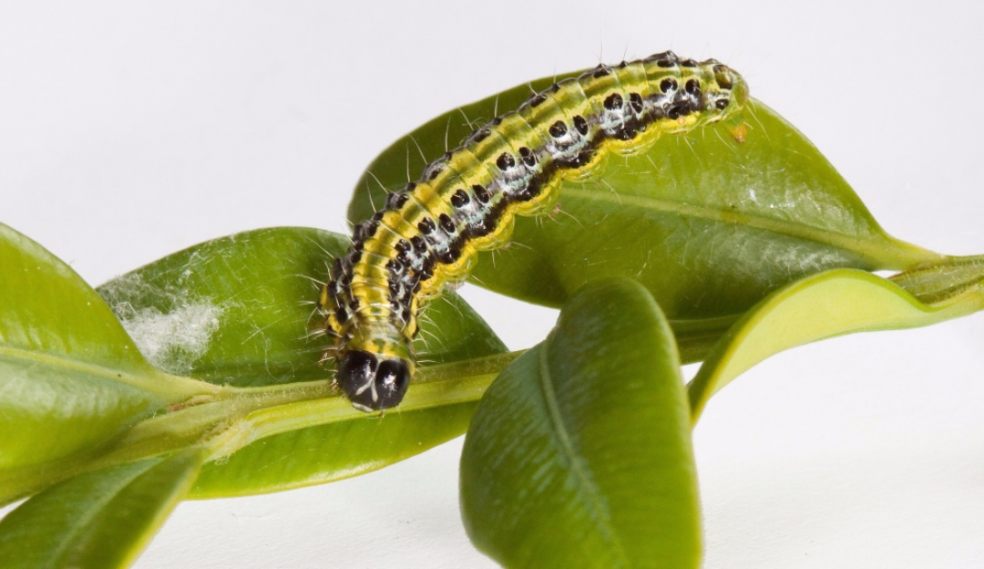
Box tree caterpillar: What is it and how can it affect your garden?
The box tree caterpillar has been announced as the top critter in the 24th RHS annual pest and disease ranking – for the third year running.
It’s based on thousands of gardener inquiries, and the pesky caterpillar has brought more inquiries than the rest of the top five combined.
But what does it look like, how does it damage plants and is there anything we can do to eradicate it? The RHS offers the following guide to this nuisance pest:
Where does it come from?
It’s native to East Asia but became established in Europe in 2007, although it wasn’t reported in private gardens until 2011. The caterpillar is the larvae of a box tree moth, which feeds on box plants.
What does it look like?
The eggs, which are pale yellow, can be spotted on the underside of box leaves. Pupae are hidden in a cocoon of white webbing, which is spun among twigs and leaves.
Newly hatched caterpillars have black heads and a greenish-brown body and can reach up to 4cm at maturity, when their colour will have turned to greenish yellow with thick black and thin white stripes along the body. Adult moths have white wings with a brown border with a wingspan of around 4cm.
What are the signs that you have it?
You may simply see the caterpillars, or the webbing that they produce which covers their feeding area. Box plants can also show dieback areas, which are particularly visible when plants have been trimmed.
How much damage can it do?
Quite a lot. In many cases the caterpillars cause severe defoliation. Where it has become established, particularly in the south-east, it is likely to pose a recurring problem throughout the growing season and in subsequent years.
The moth is also becoming more common in other regions of England, and has been spotted in parts of Wales, Scotland and Ireland.
What is its life cycle?
It is most active from April to October. It overwinters as small caterpillars, hidden between box leaves that have been spun together with silk in late autumn, and completes its development in spring.
According to the EBTS (European Boxwood and Topiary Society), adult moths can fly up to 10km during their life and start laying eggs two to three days after they start flying. Each female can lay up to 700 eggs.
How can you control it?
If you’re going down a non-chemical route, remove the caterpillars by hand. To monitor adult activity, you can buy pheromone traps. Alternatively, use a nematode, sold as fruit and vegetable protection, which will provide some biological control.
EBTS advises gardeners to carefully comb through the plants with a small hand claw/rake to remove the cobwebbing and clear away the debris under the plants. It may be easier to put a cloth under the plants to catch the debris.
As a last resort, the RHS suggests you might consider an alternative to box, such as Berberis darwinii ‘Compacta’, Euonymus fortunei or various pittosporums which have small leaves and can be trimmed into a neat hedge.
IMAGE: Box tree caterpillar (Carol Sheppard/RHS/PA)
See also: Ten fragrant gardening gifts for Mothers
See also: Alan Titchmarsh: Keep getting out there and keep getting mucky













